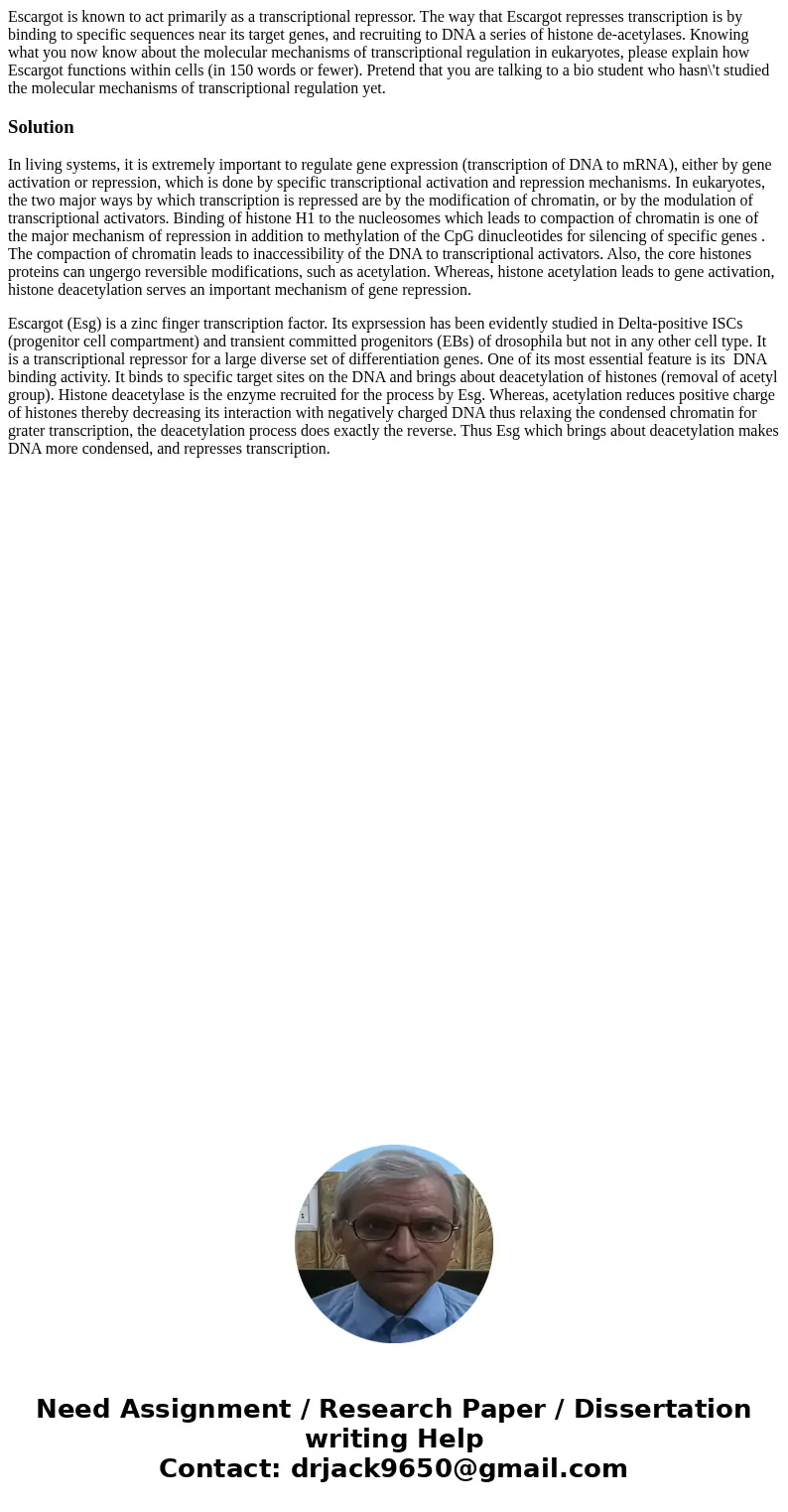Escargot is known to act primarily as a transcriptional repr
Escargot is known to act primarily as a transcriptional repressor. The way that Escargot represses transcription is by binding to specific sequences near its target genes, and recruiting to DNA a series of histone de-acetylases. Knowing what you now know about the molecular mechanisms of transcriptional regulation in eukaryotes, please explain how Escargot functions within cells (in 150 words or fewer). Pretend that you are talking to a bio student who hasn\'t studied the molecular mechanisms of transcriptional regulation yet.
Solution
In living systems, it is extremely important to regulate gene expression (transcription of DNA to mRNA), either by gene activation or repression, which is done by specific transcriptional activation and repression mechanisms. In eukaryotes, the two major ways by which transcription is repressed are by the modification of chromatin, or by the modulation of transcriptional activators. Binding of histone H1 to the nucleosomes which leads to compaction of chromatin is one of the major mechanism of repression in addition to methylation of the CpG dinucleotides for silencing of specific genes . The compaction of chromatin leads to inaccessibility of the DNA to transcriptional activators. Also, the core histones proteins can ungergo reversible modifications, such as acetylation. Whereas, histone acetylation leads to gene activation, histone deacetylation serves an important mechanism of gene repression.
Escargot (Esg) is a zinc finger transcription factor. Its exprsession has been evidently studied in Delta-positive ISCs (progenitor cell compartment) and transient committed progenitors (EBs) of drosophila but not in any other cell type. It is a transcriptional repressor for a large diverse set of differentiation genes. One of its most essential feature is its DNA binding activity. It binds to specific target sites on the DNA and brings about deacetylation of histones (removal of acetyl group). Histone deacetylase is the enzyme recruited for the process by Esg. Whereas, acetylation reduces positive charge of histones thereby decreasing its interaction with negatively charged DNA thus relaxing the condensed chromatin for grater transcription, the deacetylation process does exactly the reverse. Thus Esg which brings about deacetylation makes DNA more condensed, and represses transcription.

 Homework Sourse
Homework Sourse